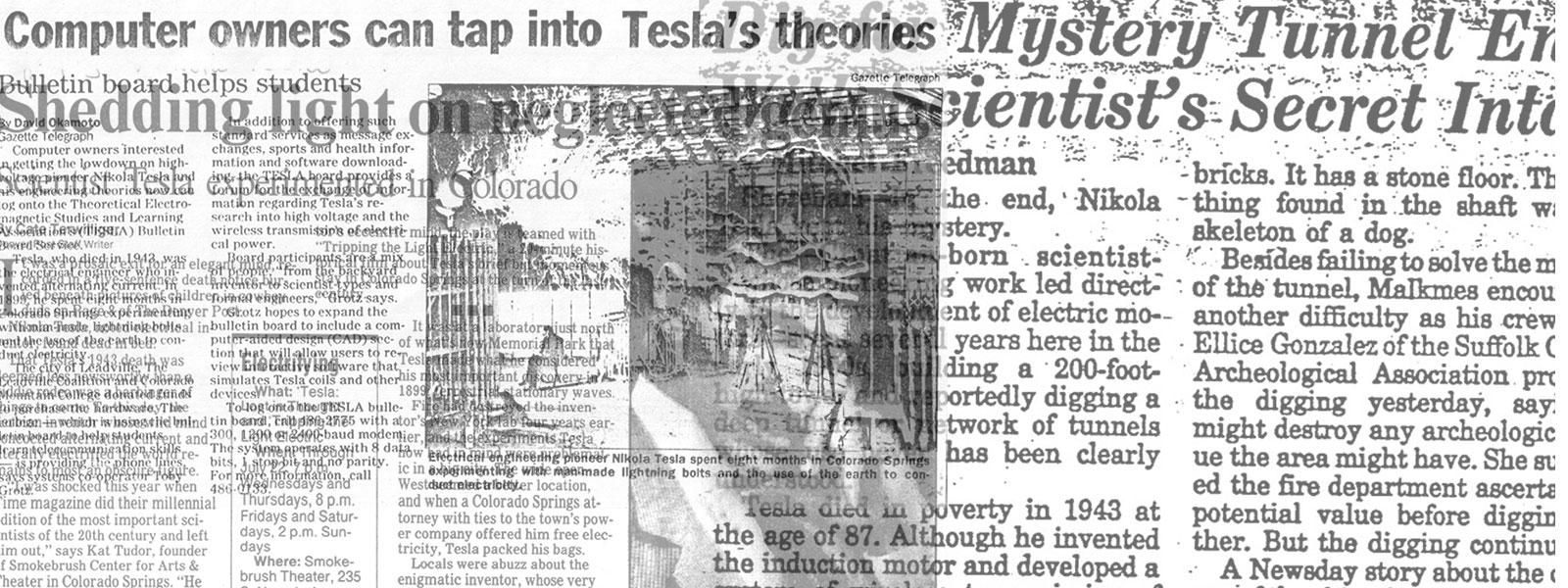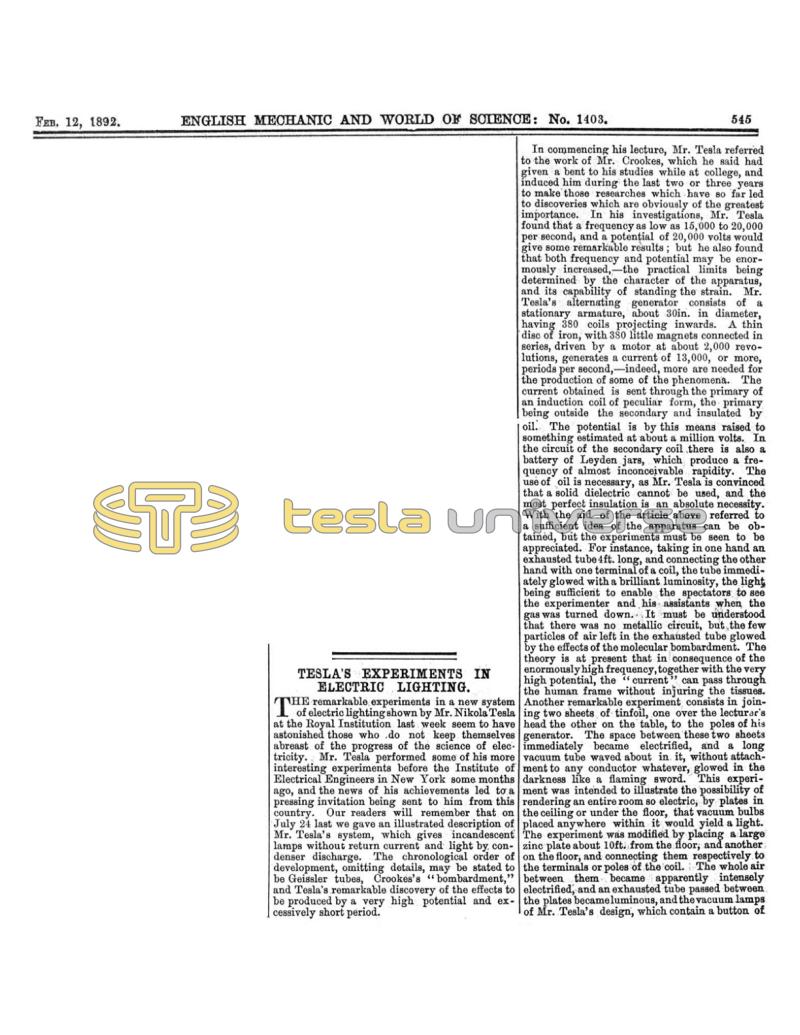
Nikola Tesla Articles
Tesla's Experiments in Electric Lighting
The remarkable experiments in a new system of electric lighting shown by Mr. Nikola Tesla at the Royal Institution last week seem to have astonished those who do not keep themselves abreast of the progress of the science of electricity. Mr. Tesla performed some of his more interesting experiments before the Institute of Electrical Engineers in New York some months ago, and the news of his achievements led to a pressing invitation being sent to him from this country. Our readers will remember that on July 24 last we gave an illustrated description of Mr. Tesla’s system, which gives incandescent lamps without return current and light by condenser discharge. The chronological order of development, omitting details, may be stated to be Geissler tubes, Crookes’s “bombardment,” and Tesla’s remarkable discovery of the effects to be produced by a very high potential and excessively short period.
In commencing his lecture, Mr. Tesla referred to the work of Mr. Crookes, which he said had given a bent to his studies while at college, and induced him during the last two or three years to make those researches which have so far led to discoveries which are obviously of the greatest importance. In his investigations, Mr. Tesla found that a frequency as low as 15,000 to 20,000 per second, and a potential of 20,000 volts would give some remarkable results; but he also found that both frequency and potential may be enormously increased, - the practical limits being determined by the character of the apparatus, and its capability of standing the strain. Mr. Tesla’s alternating generator consists of a stationary armature, about 30in. in diameter, having 380 coils projecting inwards. A thin disc of iron, with 380 little magnets connected in series, driven by a motor at about 2,000 revolutions, generates a current of 13,000, or more, periods per second, - indeed, more are needed for the production of some of the phenomena. The current obtained is sent through the primary of an induction coil of peculiar form, the primary being outside the secondary and insulated by oil. The potential is by this means raised to something estimated at about a million volts. In the circuit of the secondary coil there is also a battery of Leyden jars, which produce a frequency of almost inconceivable rapidity. The use of oil is necessary, as Mr. Tesla is convinced that a solid dielectric cannot be used, and the most perfect insulation is an absolute necessity. With the aid of the article above referred to a sufficient idea of the apparatus can be obtained, but the experiments must be seen to be appreciated. For instance, taking in one hand an exhausted tube 4ft. long, and connecting the other hand with one terminal of a coil, the tube immediately glowed with a brilliant luminosity, the light being sufficient to enable the spectators to see the experimenter and his assistants when the gas was turned down. It must be understood that there was no metallic circuit, but the few particles of air left in the exhausted tube glowed by the effects of the molecular bombardment. The theory is at present that in consequence of the enormously high frequency, together with the very high potential, the “current” can pass through the human frame without injuring the tissues. Another remarkable experiment consists in joining two sheets of tinfoil, one over the lecturer’s head the other on the table, to the poles of his generator. The space between these two sheets immediately became electrified, and a long vacuum tube waved about in it, without attachment to any conductor whatever, glowed in the darkness like a flaming sword. This experiment was intended to illustrate the possibility of rendering an entire room so electric, by plates in the ceiling or under the floor, that vacuum bulbs placed anywhere within it would yield a light. The experiment was modified by placing a large zinc plate about 10ft. from the floor, and another on the floor, and connecting them respectively to the terminals or poles of the coil. The whole air between them became apparently intensely electrified, and an exhausted tube passed between the plates became luminous, and the vacuum lamps of Mr. Tesla’s design, which contain a button of carbon attached to a wire (see July 24, 1891), glowed brilliantly without having any connection of a metallic or other substance. In another experiment, Mr. Tesla connected a variety of vacuum tubes containing small discs of metal, and even non-conductors, such as aluminium, lime, or carbon, to one pole of the coil, and produced some beautiful effects. In the midst of a luminous haze, due to the residual gas in the tube, the disc of solid matter became brightly incandescent, and yielded a comparatively powerful light, which became brighter when he brought his bare hand close to the bulb, and brighter still when he placed over the bulb an ordinary shade of metal. Extremely beautiful effects of phosphorescence were also produced by touching one wire from the generator and holding a bulb containing the phosphorescent material, such as yttrium, sulphate of zinc, and artificial diamond. The sulphate of zinc in particular gave a magnificent green glow altogether surpassing the phosphorescence producible in the ordinary way. But experiments must be seen to be appreciated, and though the effects produced by Mr. Tesla have occupied the attention of electricians for some months both in America and this country, they have not yet been explained. It is evident that an important discovery has been made, and numerous workers will investigate the phenomena wherever suitable appliances are available.
